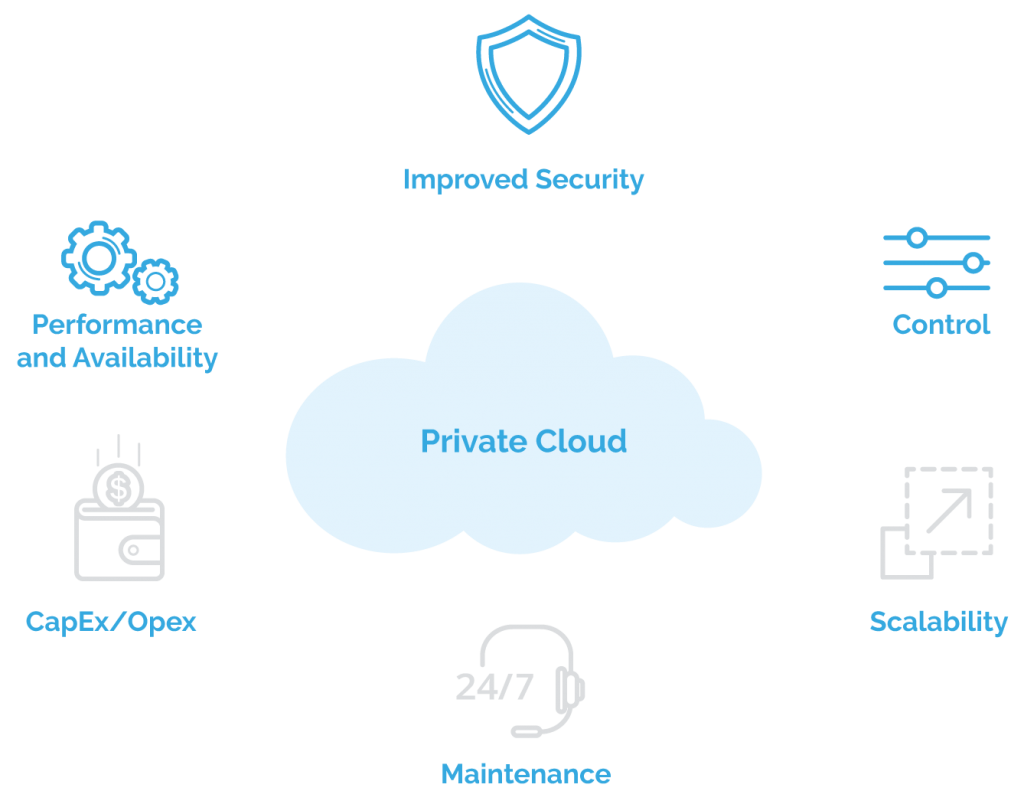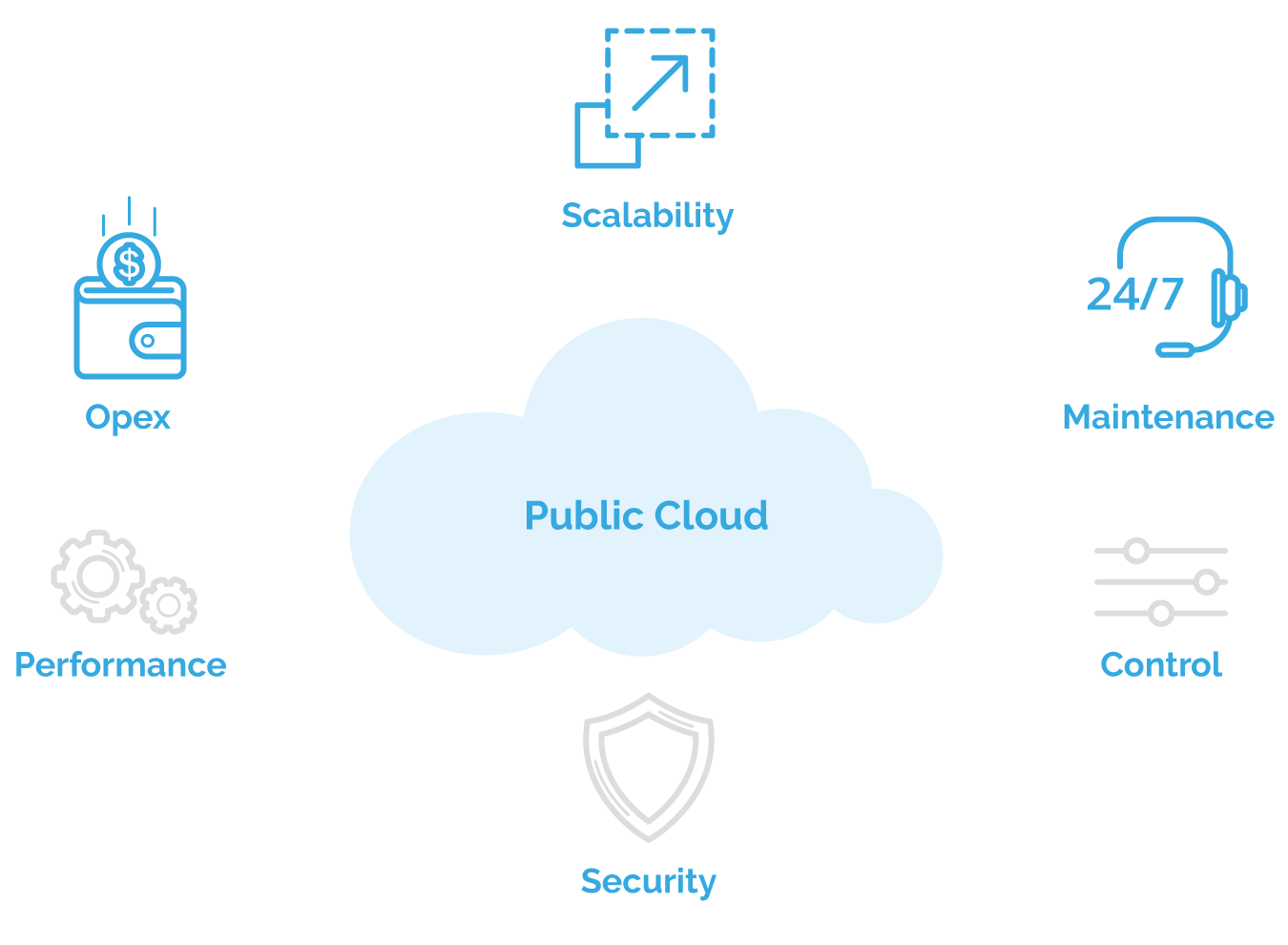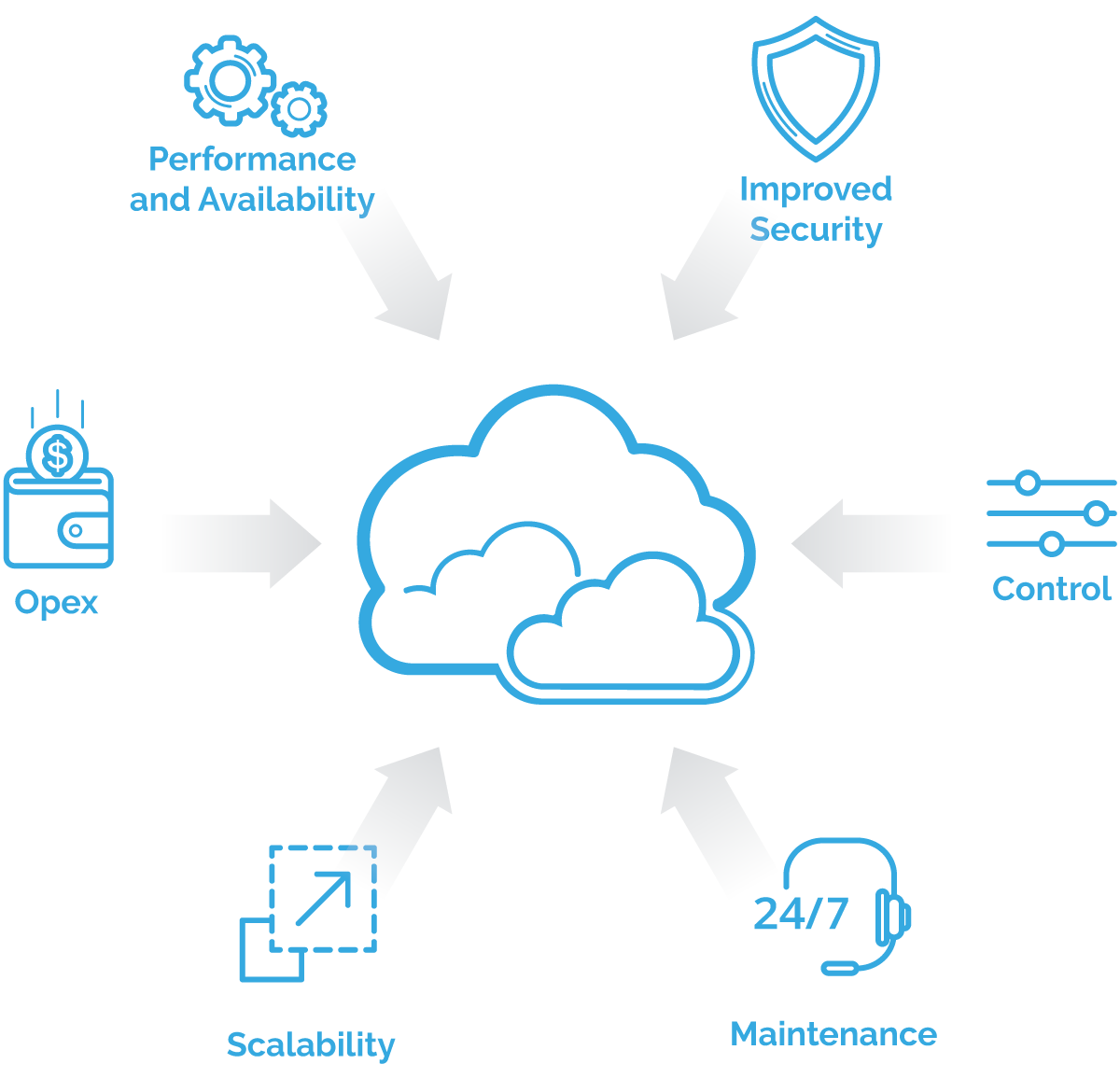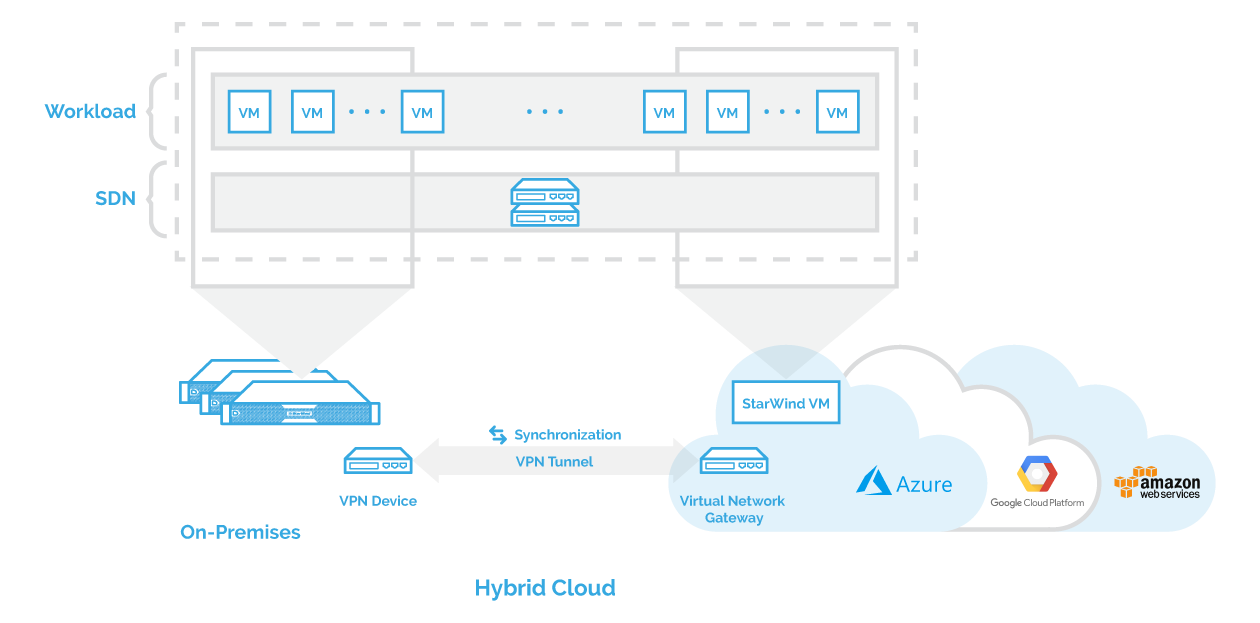Introduction
You all probably know that our main goal is delivering all the “building blocks” required to construct a full-stack IT infrastructure. This is ensured by a portfolio that has solutions for most business problems for IT systems. With the ever-increasing popularity of cloud computing, StarWind has recently created an easy-entry-to-cloud solution suitable for any businesses. It ensures that your data is always safe and readily available, regardless of outside factors.
Before we take a deep dive into StarWind Hybrid Cloud, let’s overview common cloud deployment models.
Private Cloud

A private cloud is also well known as servers in your basement. It’s a computing power provided as a service within a virtualized environment using an underlying pool of physical computing, storage, and network resources. A private cloud usually is located on a dedicated infrastructure on-premises of the business. A private cloud enables an organization to use cloud computing technology as a means of centralizing access to IT resources from different parts, locations, or departments.
The advantages of such implementations are Performance and Availability, Improved Security, and Control. The private cloud is all yours and yours alone. With a better understanding of the business needs, you can tweak and customize your private cloud performance and availability. You have the most control over security aspects because all security efforts are done in-house or are outsourced to a managed security provider. The private cloud offers fully customized control with respect to maintaining data and infrastructure, including server operations.
However, CapEx/OpEx, Maintenance, Scalability intercept businesses going with a private cloud approach. Many organizations are surprised by the costs involved in managing data center infrastructure. Such factors as utilization, redundancy, hardware costs, and efficiency usually lead to a high cost of ownership. It gives the ability to control and manage, but also creates the problem of efficiently utilizing budget to accomplish business needs.
Public Cloud

You all may know that a public cloud is a publicly accessible environment owned by a third-party cloud provider. The IT resources on public clouds are usually provisioned via the previously described cloud delivery models. They are generally offered to cloud consumers at a cost or are commercialized via other avenues. Common service models of a public cloud are software as a service (SaaS), platform as a service (PaaS), and infrastructure as a service (IaaS). For StarWind customers, IaaS is more interesting option since a third-party provider offers virtualized computing resources such as VMs and storage over the internet. Thus, it’s a reasonable alternative to purchasing and maintaining traditional hardware.
A public cloud lowers the total cost of ownership since there is no need to buy expensive hardware (the public cloud does it for you). The services are offered on a pay-per-use model. A public cloud also gives customers the flexibility to ramp up or dial back on infrastructure use as needed. Also, it covers server availability. Usually, public cloud providers cover the terms of availability in Service Level Agreement and have great uptime.
Despite all pros, for some businesses, Performance, Security, and Control are aspects that could be stoppers on a way to a public cloud. Depending on public cloud services, this may require additional resources to make a transition and adapt your applications to run in a public cloud. Because of the multi-tenant nature of the public cloud, security is an ongoing concern for some enterprises evaluating the cloud. While public cloud providers offer security technologies, such as encryption and identity and access management tools, some organizations — especially those with strict security requirements — choose to keep their workloads on-premises. Users typically deploy public cloud services in a self-service mode. Some companies find it difficult to accurately track cloud service usage, and potentially end up paying for more cloud resources than they actually need.
Hybrid Cloud

Basically, a hybrid cloud is an environment comprised of different cloud deployment models. For example, a cloud consumer may choose to load the sensitive data to a private cloud and other, less sensitive services to a public cloud.
Hybrid deployment architectures can be complex and challenging. We in StarWind believe that the aim of the hybrid approach is to combine the best of both clouds in a single manageable layer to reduce TCO, increase scalability, as well additional availability and reliability.

The architecture requires minimum two nodes, each located in its own cloud. A well-known Hyper-V ecosystem is implemented on top of servers on-premises with Azure VMs. Using a VPN tunnel between locations, StarWind distributes highly available, active-active replicated shared storage to the cluster, seamlessly merging both clouds. StarWind Hybrid Cloud can be deployed in no time and is administrated using such familiar and convenient tools as Hyper-V, SCVMM, vSphere, Web Console, 5nine, StarWind manager or CLI.
[WPGP gif_id=”7348″ width=”720″]
StarWind Hybrid Cloud features:
- On-premises environments that are very flexible and can start from just 1 node
- Covered by Installation Assistance and ProActive Support.
- Active-Active data replication between Azure and On-Premises.
- Automates Failover and Failback in case of a failure.
- The full environment can be run from any part of the instance in case of a failure
- Quick and easy maintenance.
Conclusion
VSAN from StarWind features Hybrid Cloud with Azure providing businesses with all the “building blocks” required to construct a full-stack IT infrastructure: fault-tolerant stretched cluster, backup to the cloud, and highly available DR location. The solution is developed to ensure that your data is always safe and readily available, regardless of outside factors.
For more information, check the feature page.




